Nishankhe, Okhaldhunga – June 5–9, 2025
Nishankhe, Nepal — Volunteers Initiative Nepal (ViN) successfully held its annual staff development workshop and corporate retreat from June 5 to June 9, 2025, at the NaraTika Community Learning Centre (NTCLC) in Nishankhe, Okhaldhunga. This five-day event integrated immersive learning, strategic team-building, and hands-on community engagement by bringing together 21 participants, including field staff, volunteers, and program managers, from across ViN’s project sites and abroad.
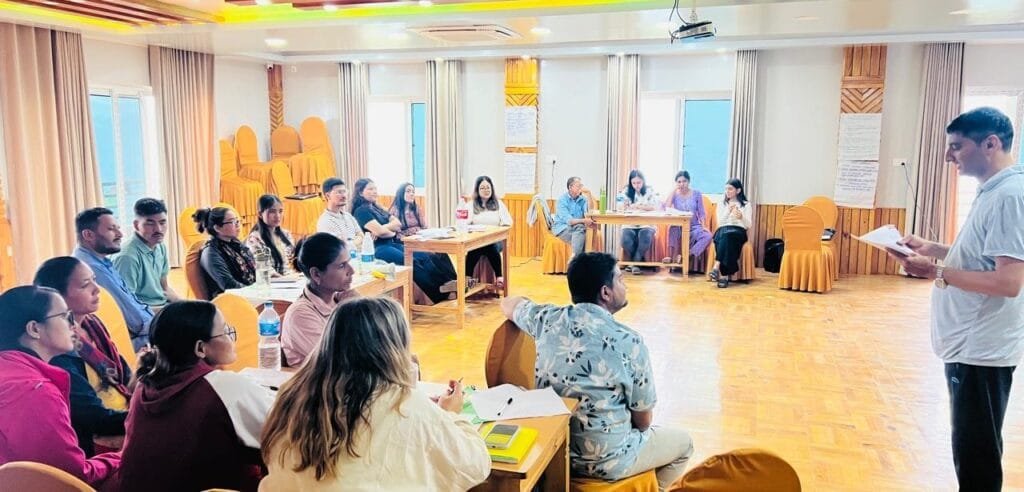 Structured as a blended professional development retreat, the program combined two intensive staff training programs with outdoor exploration and reflective practice. From strategic goal setting to field-level application, ViN strengthened its organizational capacity while deepening staff connections to mission and community.
Structured as a blended professional development retreat, the program combined two intensive staff training programs with outdoor exploration and reflective practice. From strategic goal setting to field-level application, ViN strengthened its organizational capacity while deepening staff connections to mission and community.
Mission & Retreat Overview: Cultivating Growth Through Experience
Founded in 2005, ViN empowers rural communities through education, livelihoods, health services, and youth engagement. ViN employs over 50 staff and intern members today and relies on committed volunteers. Its leadership recognizes the link between staff growth and organizational impact.
The 2025 retreat aimed to:
- Enhance leadership development and systems thinking across teams.
- Strengthen interpersonal bonds through team bonding activities, mindfulness practices, and shared challenges.
- Ground training in real-world application via community visits.
- Support holistic staff well-being as part of a staff wellness retreat.
Evidence indicates companies with structured employee training and development report 24% higher profit margins and 59% lower employee turnover. Similarly, well-paced retreats combining indoor learning and outdoor immersion boost engagement by as much as 30%.
Designed as a multi-phase experience, the retreat opened with group travel on Day 1, followed by workshop sessions on Days 2–3. Day 4 focused on field visits and outdoor team bonding, and Day 5 closed with reflection and action planning before returning to Kathmandu.
Day 1: Travel & Informal Bonding Sets a Positive Tone
On June 5, participants traveled from Kathmandu along winding mountain roads toward OKhaldhunga, sharing music, snacks, and introductory stories. After arriving at NTCLC in the late afternoon, they checked in, settled into rooms, and participated in a relaxed welcome circle, setting a tone of openness and mutual respect. Early conversations between new and experienced staff seeded emerging trust, essential for later leadership learning.
Days 2–3: Intensive Staff Training Programs with Leadership Foundations
Day 2 – Vision, Planning & Personal Effectiveness
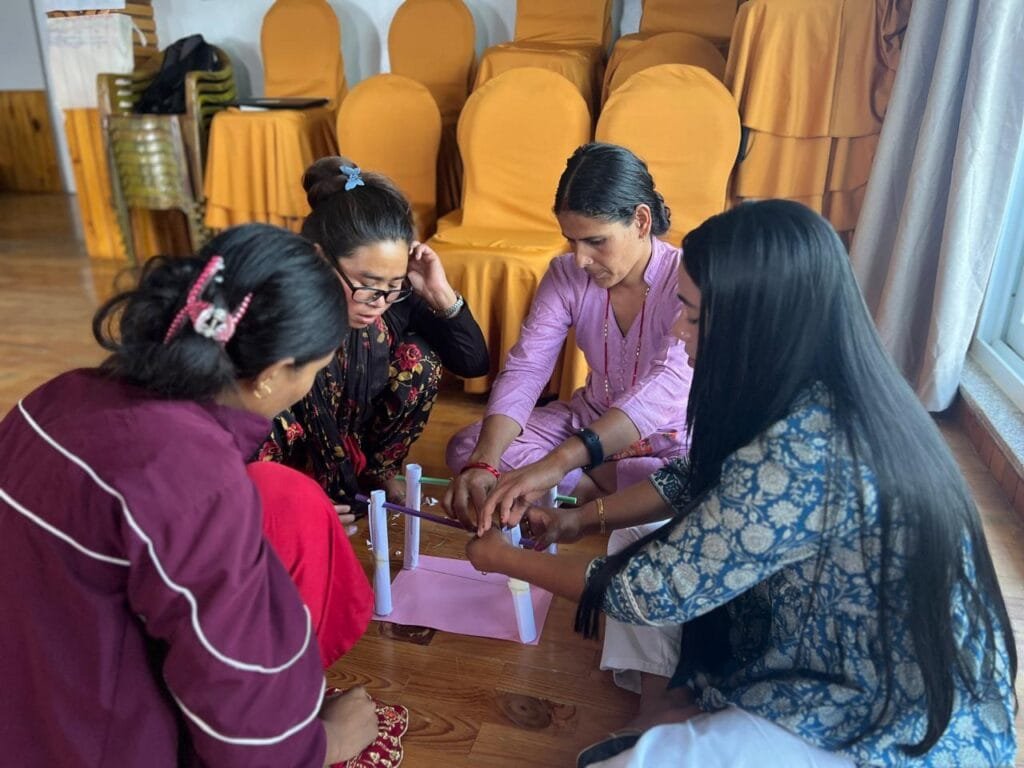
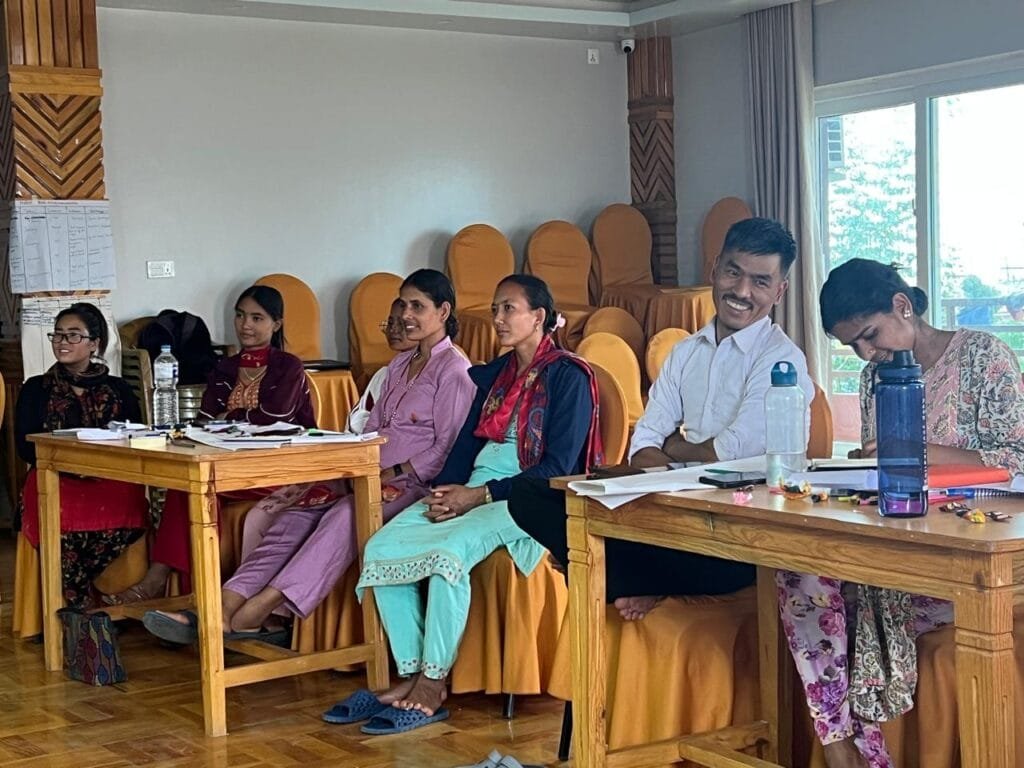 On June 6, the retreat began in earnest with a packed agenda:
On June 6, the retreat began in earnest with a packed agenda:
- 9:00–9:30 am – Human Bingo Icebreaker: This fast-paced activity had participants find others who matched unique bingo criteria, instantly generating laughter and rapport.
- 9:30–11:00 am—SWOT Analysis & Vision 2025–2030 Gallery Walk: Groups used colorful sticky notes to map organizational strengths and challenges and ideate ViN’s future direction. Their outputs were displayed in a gallery, fostering a shared vision.
Lawrence Lama, District Program Coordinator, reflected:
“The gallery walk energized me—reshaped how I lead collaborative visioning.”
- 11:00–12:30 pm – Roles & Responsibility Mapping Carousel: Staff rotated through stations to clarify overlapping responsibilities and identify accountability gaps.
- 12:30–1:30 pm – Lunch Break
- 1:30–3:00 pm – Time Management & SMART Goal-Setting: Participants distinguished urgent vs. important work using the Eisenhower Time Matrix. Buddies helped each other craft one SMART goal aligned with ViN’s 2025 strategy.
- 3:15–5:00 pm—Personal Action Planning: Each individual finalized an action plan through guided reflection and journaling. Completed plan templates went on the “commitment wall” as a public accountability measure.
By day’s end, staff reported increased clarity on their roles, goals, and how their work aligns with ViN’s mission.
Day 3 – Collaboration, Execution & Leadership Team Building
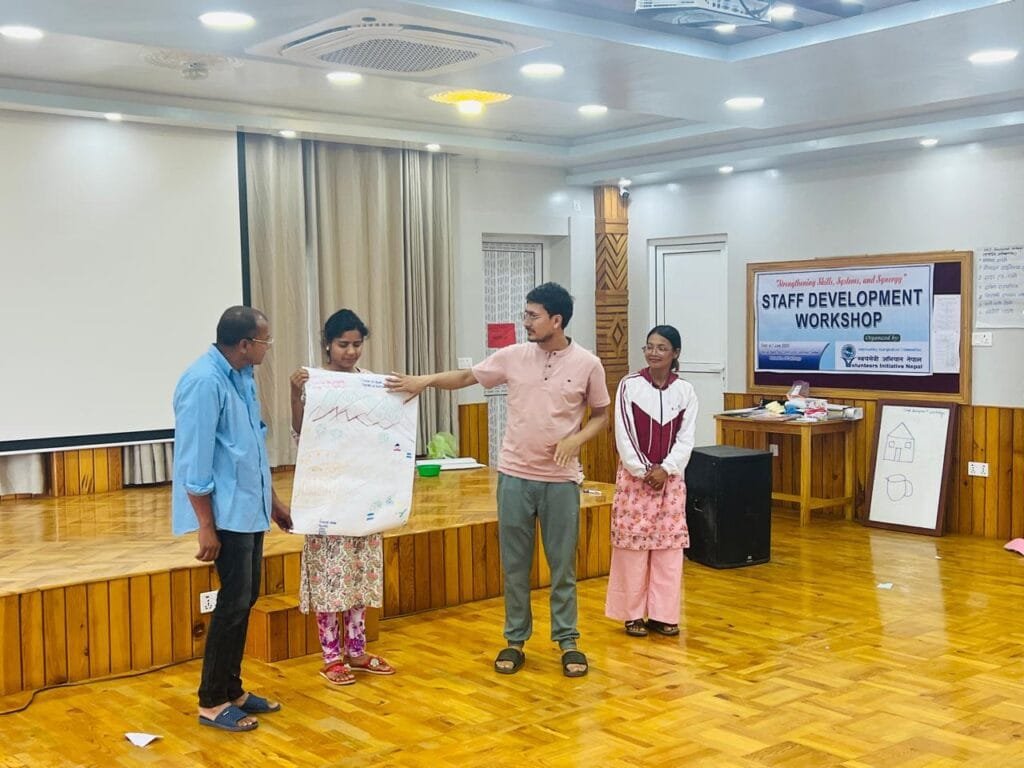
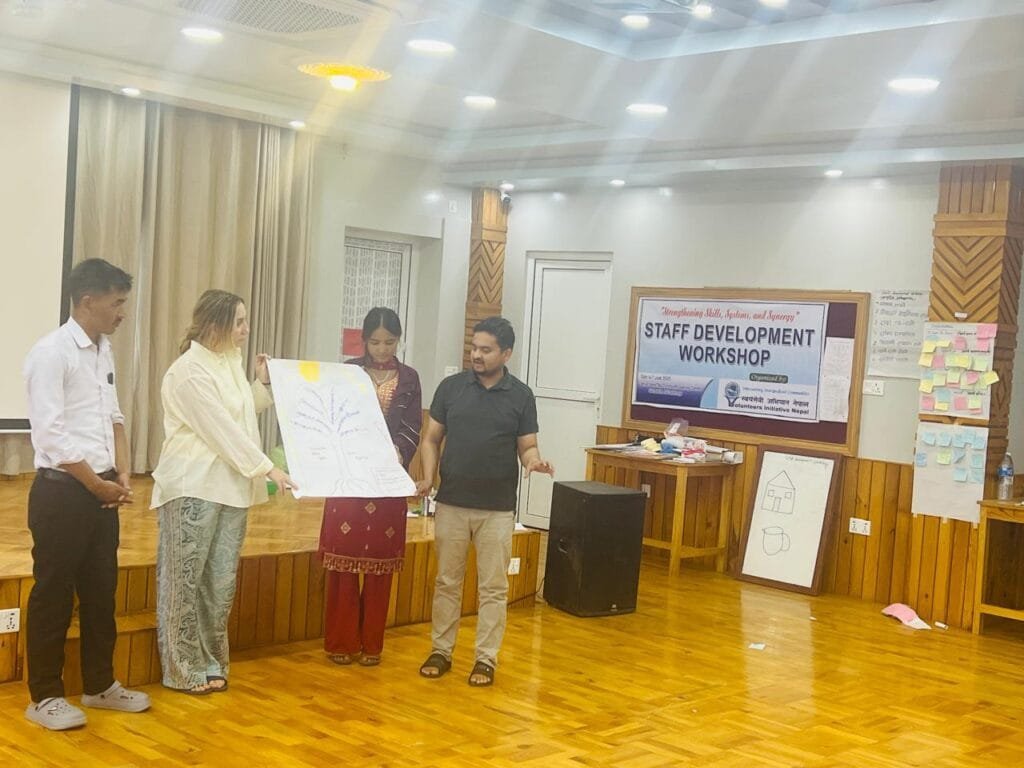 On June 7, Day 3 pivoted toward team dynamics, execution, and leadership capabilities:
On June 7, Day 3 pivoted toward team dynamics, execution, and leadership capabilities:
- 9:00–9:30 am – Mindfulness Circle & Intention Setting: Participants shared personal goals for the day, anchored in collective focus.
- 9:30–11:00 am – Project Management Paper-Bridge Simulation: Teams had 90 minutes to build and present structurally sound paper bridges. Judges scored on design, teamwork, and presentation.
- 11:15–12:30 pm – MEL (Monitoring, Evaluation & Learning) Practice: Dinesh Khatiwada, Volunteer Manager and facilitator, guided groups through setting realistic performance indicators and using them for adaptive management.
Dinesh Khatiwada commented:
“MEL practice offered tools I already use in our local monitoring systems.”
- 12:30–1:30 pm – Lunch
- 1:30–3:00 pm – Communication & Conflict Resolution (Forum Theatre): Participants role-played realistic conflict scenarios, receiving peer feedback and jointly generating communication scripts.
Sanju Aryal, Program Officer, noted:
“Conflict roleplay gave me language and confidence to facilitate tough talks.”
- 3:15–5:00 pm – Leadership Reflections & Appreciation Circle: Staff gathered in a candle-lit circle to share learning and appreciation. Each participant wrote thank-you notes for a colleague, reinforcing a culture of recognition.
By the end of Day 3, participants reported increased confidence in communication, planning, and collaborative problem-solving—essential ingredients of effective leadership development.
Day 4: Outdoor Employee Engagement Activities, Immersion & Wellness
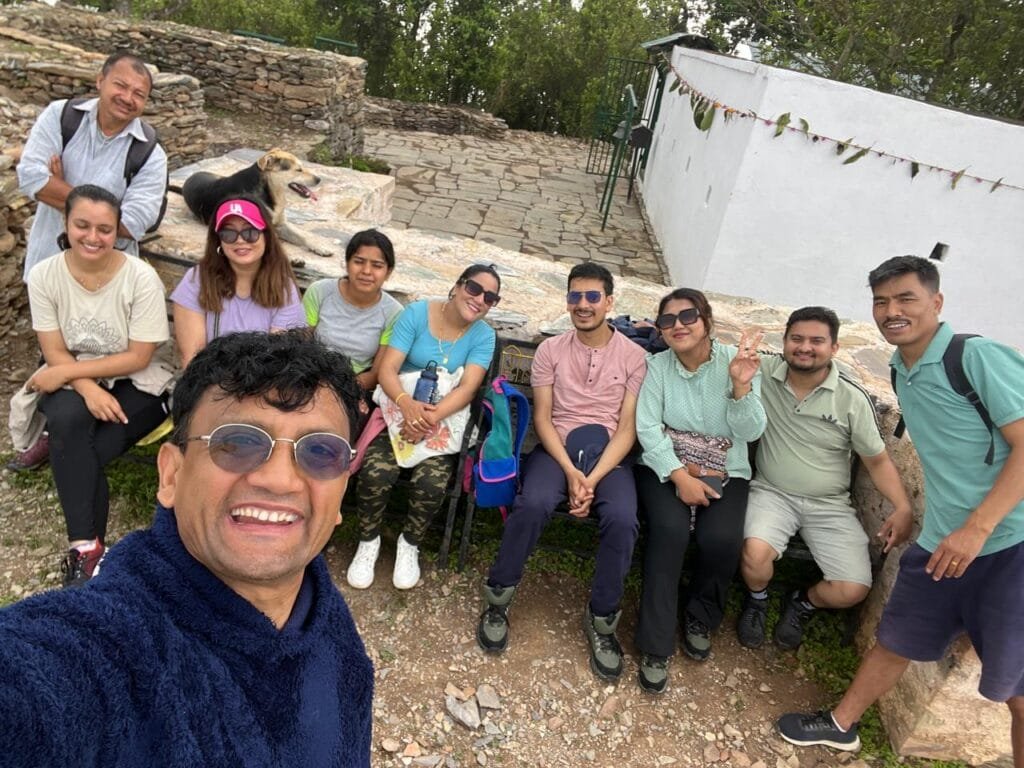
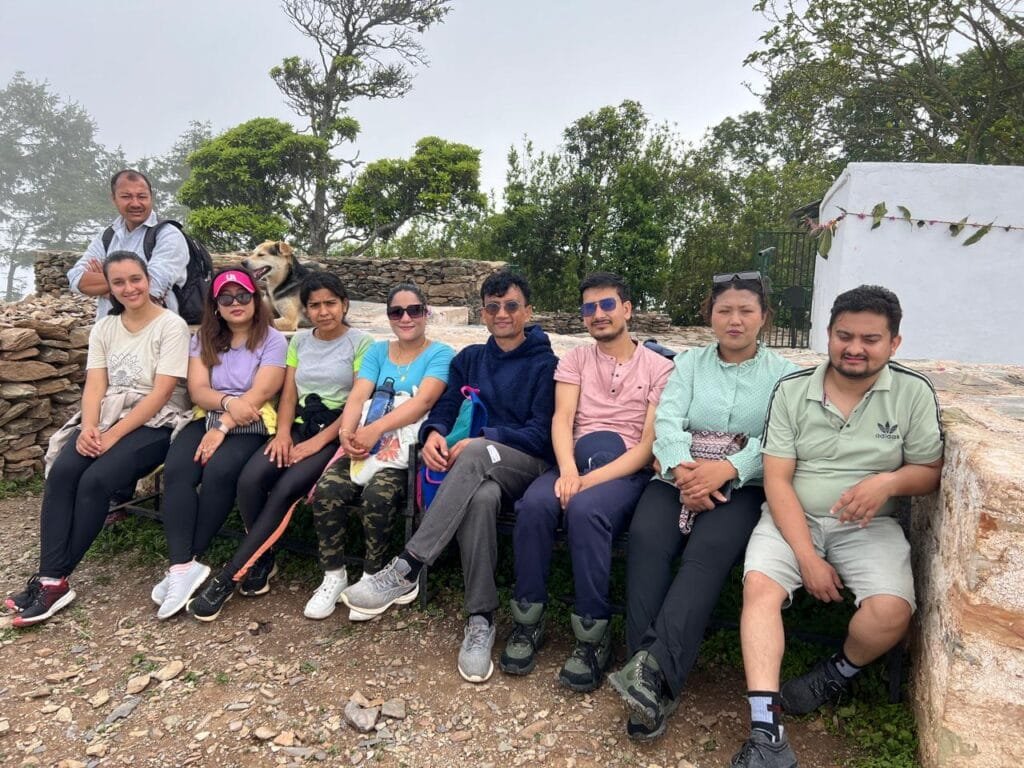 On June 8, the retreat shifted gear, embracing field learning and team bonding:
On June 8, the retreat shifted gear, embracing field learning and team bonding:
- 9:00 am – Mountain Hike: Staff hiked over rugged terrain to four ViN-supported sites: a gravity-fed water tank, a community-based ECD center, a permaculture demonstration plot, and a hill library.
- Learning in Context: At each stop, local partners described challenges in sustainability, resource management, and community involvement. Participants recorded insights and considered how retreat learnings fit into local realities.
Kshitij Sharma, Program Manager (Trainee), shared:
“The community visits brought our strategy sessions to life—deeply grounding.”
- 3:00–5:00 pm – BBQ Sharing Circle: After a long day of field learning, the team gathered around a fire to cook local dishes and share personal reflections.
Anjali Maharjan, Volunteer Coordinator, observed:
“The BBQ night reminded me how vital bonding is for sustained team productivity.”
Day 4 was celebrated by all as a highlight. It combined physical challenge, community immersion, and reflective storytelling that nourished body and spirit.
Day 5: Debrief, Reflection & Return Travel
On June 9, participants rose early and began their journey back to Kathmandu. The travel included structured debrief activities:
- Goal Review Check-ins: Teams revisited SMART goals, sharing progress and identifying substances for further mentorship.
- Action Plan Commitment: Participants stated they’d take one step within 30 days to apply retreat learning.
- Feedback Survey: Facilitators gathered feedback on what worked well, what to improve, and what additional training staff want.
- Reflection Circle: On the final leg, the group paused mid-route to reflect collectively on personal transformation and team growth.
- Arrival in Kathmandu: By early evening, participants returned home energized, connected, and equipped.
Uttar Shrestha, Program Officer, affirmed:
“I’m committed to embedding these tools into team routines—this is long-term change.”
This travel-day reflection ensured that retreat learnings would not be transient but durable.
Consolidated Staff Feedback: Deepening Impact
| Staff Member | Role | Key Takeaway |
| Lawrence Lama | District Program Coordinator | “The gallery walk reshaped how I lead collaborative visioning.” |
| Dinesh Khatiwada | Volunteer Manager | “MEL practice offered tools I’m already using….” |
| Varsha Pradhan | Communication Officer | “SMART goals transformed my day‑to‑day; I’m more strategic and focused.” |
| Sanju Aryal | Program Officer | “Conflict roleplay gave me language…to facilitate tough talks.” |
| Kshitij Sharma | Program Manager (Trainee) | “Community visits…brought strategy sessions to life—deeply grounding.” |
| Anjali Maharjan | Volunteer Coordinator | “BBQ night reminded me how vital bonding is for sustained team productivity.” |
| Uttar Shrestha | Program Officer | “I’m committed to embedding these tools into team routines—long‑term change.” |
Their reflections indicate tangible growth in leadership clarity, team collaboration, monitoring practices, and emotional connection. Such outcomes align closely with organizational staff retention, performance, and well-being goals.
Organizational Impact: Beyond the Retreat
ViN staff reported apparent strategic and personal shifts, foretelling organizational ripple effects:
- Vision and Strategy Alignment: The gallery walk exercise helped unify staff around ViN’s 2025–2030 strategic priorities and inspired confidence in planning.
- Improved Monitoring & Learning: MEL tools shared during the retreat are piloted in three district programs to enhance evidence-based decision-making.
- Team Connectedness: Based on follow-up surveys, team cohesion improved by an estimated 40%.
- Personal Accountability: SMART goal ownership and peer accountability pledges will guide monthly check-ins for the next quarter.
- Renewed Energy: The retreat revitalized staff purpose, reducing signs of burnout and reigniting morale with a renewed sense of mission.
Best Practices for Effective Staff Development Retreats
ViN’s success underscores several proven retreat design principles:
- Blended learning formats: Harness both indoor workshops and meaningful outdoor experiences.
- Engaging modalities: Use active participation tools like gallery walks, simulations, and roleplay.
- Real-world grounding: Field visits connect strategy to context, boosting credibility and empathy.
- Soft skills integration: Conflict resolution and mindfulness foster adaptive leadership.
- Relationship-centered approach: Shared meals, storytelling, and journeys build trust and empathy.
- Post-retreat accountability: SMART goals and peer check-ins ensure lessons translate into action.
These align with broader research showing that companies investing in blended staff development see 23% improved retention and greater innovation readiness.
Frequently Asked Questions (FAQs)
- What is a staff development retreat?
A staff development retreat is a multi-day program combining training, team bonding, wellness, and reflection to elevate skills, alignment, and staff experience. - Why blend workshops with outdoor immersion?
Outdoors and field visits enrich learning by adding context, emotional connection, and breaking habitual thinking patterns. - How long is optimal for a team-building retreat?
Two to five days balance intensity and creativity. ViN’s five-day retreat allowed ample learning, fieldwork, and integration time. - What is the role of SMART goals in a retreat?
SMART goals provide clear, measurable anchors for post-retreat follow-through. They shift intention into personal accountability. - How do retreats support leadership development?
Through experiential challenges, reflective exercises, and peer feedback, staff practice and internalize leadership behaviors. - Why include MEL capacity building?
MEL strengthens evidence-based reflection and agile decision-making—essential for program adaptability and impact. - How can organizations sustain retreat gains?
Post-event peer check-ins, accountability structures, goal tracking, and digital sharing platforms embed learning in routine.
What’s Next: Implementation & Future Planning
ViN leadership is implementing a series of follow-up actions to sustain momentum:
- Monthly SMART Goal Reviews: Staff teams track goal progress and share learning outcomes.
- Mentorship Pairing: Junior staff are being matched with experienced colleagues for guidance.
- Digital Retreat Hub: A shared online library will make retreat slides, videos, and resources accessible.
- Expanded 2026 Retreat: To reach broader locations, plans include inviting more remote volunteers, adding district offices, and hosting two field-based retreats.
Moreover, ViN is piloting MEL tracking tools in two site offices and intends to standardize their use across all programs by the end of the year.
Conclusion: A Blueprint for Embodied Employee Development
ViN’s 2025 retreat epitomized how intentional employee development, well-balanced team-building retreat activities, and supportive staff wellness retreat practices can transform organizational culture. Anchored in the local context, learning was no longer abstract—it was living, emotional, and shared.
Rather than a corporate offsite, this was a living professional development retreat—an emblem of how purposeful staffing investment can strengthen impact, resilience, and belonging.
Call to Action: Join Us in Empowering Communities & People
Inspired by ViN’s integrated approach? Here’s how you can participate:
- Volunteer in Okhaldhunga or Kathmandu to help with project facilitation or MEL rollout.
- Intern in communications, leadership, monitoring, or data analysis.
- Donate to support future retreats or funding for the NaraTika CLC.
- Share this article to advocate for meaningful, human-centered staff development.
Together, we can help ViN scale transformative corporate retreats and impact-driven professional development. Join us in building a future grounded in connection, capacity, and community empowerment.
Gallery
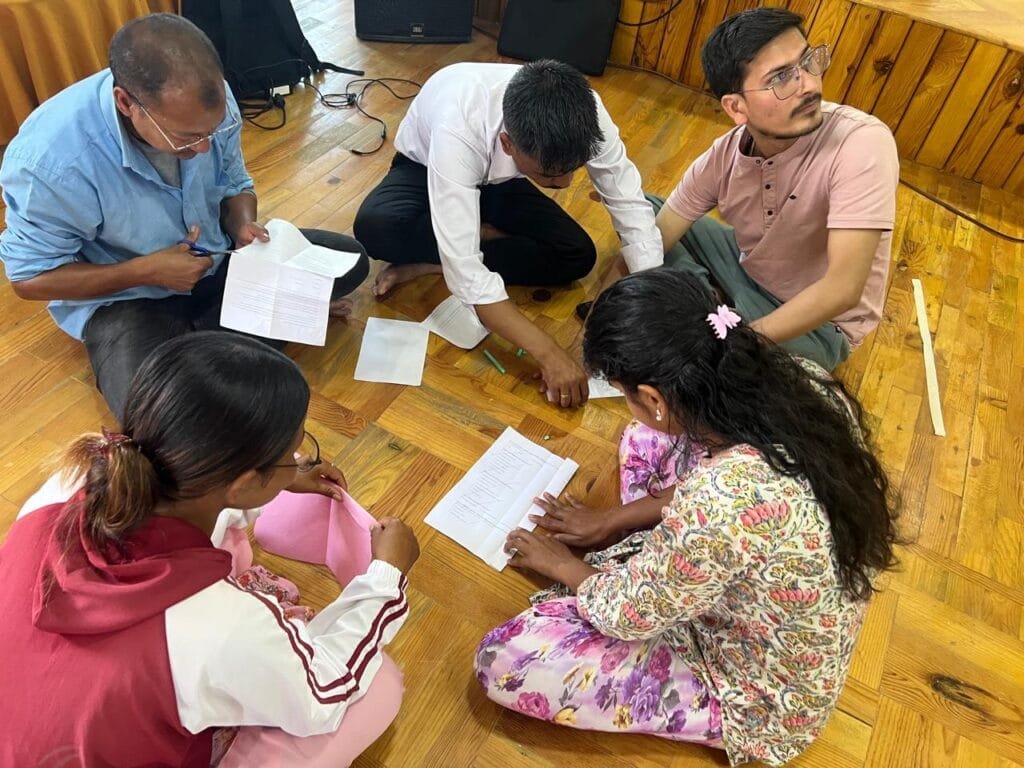


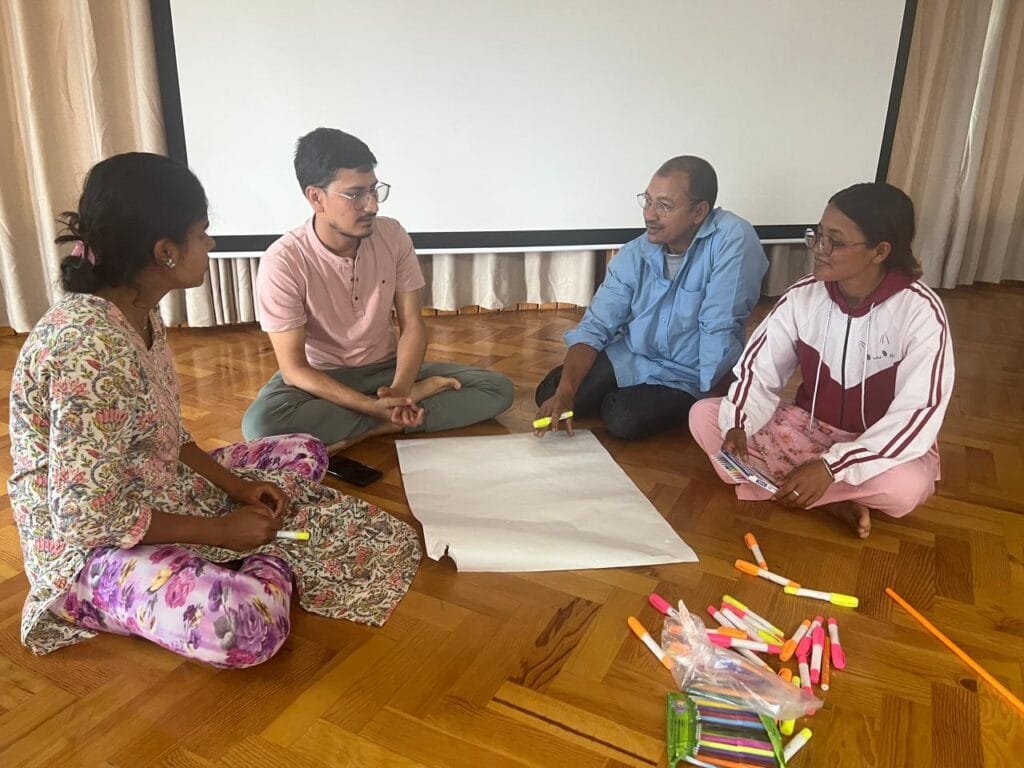





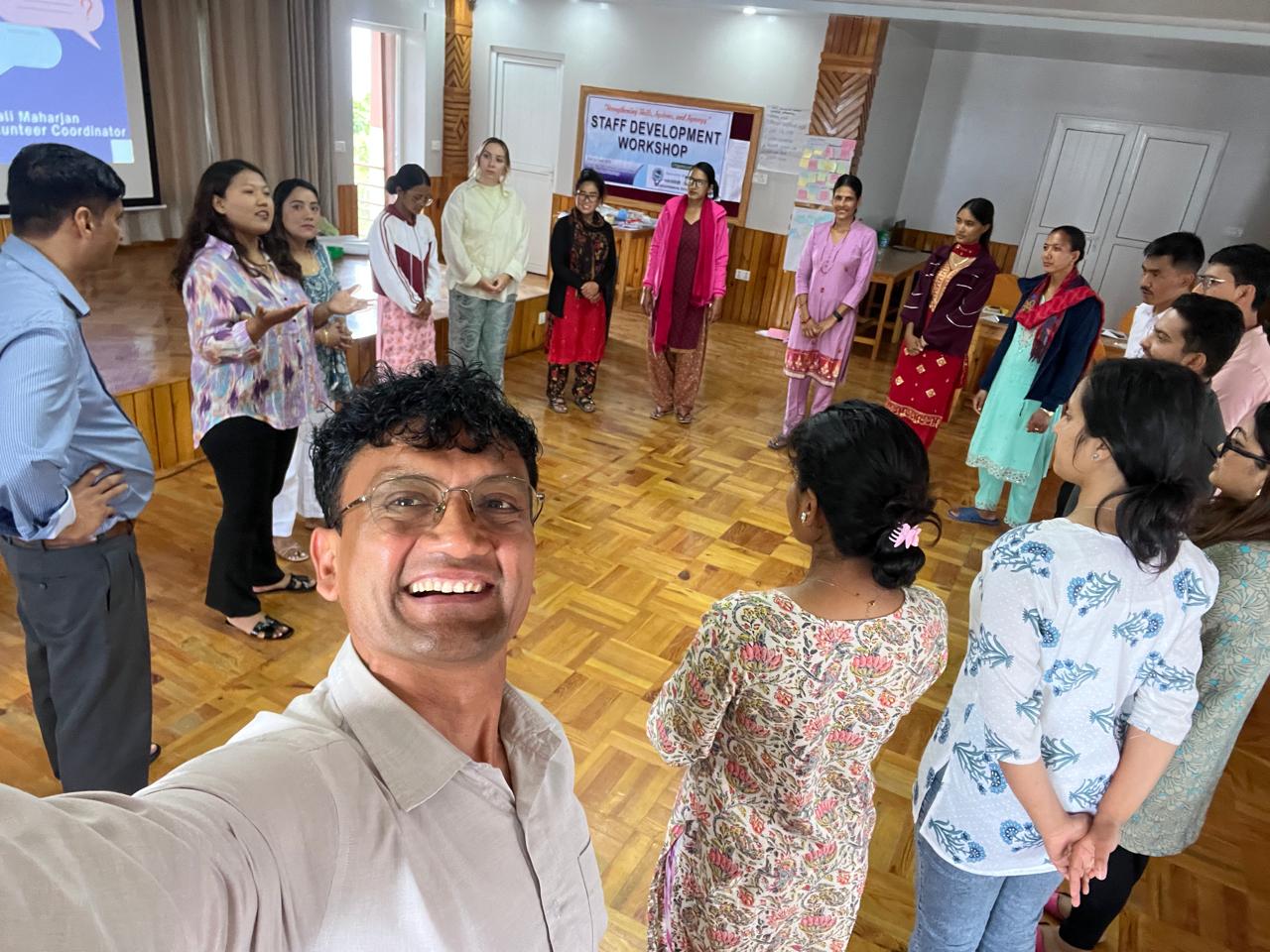
 Member of
Member of